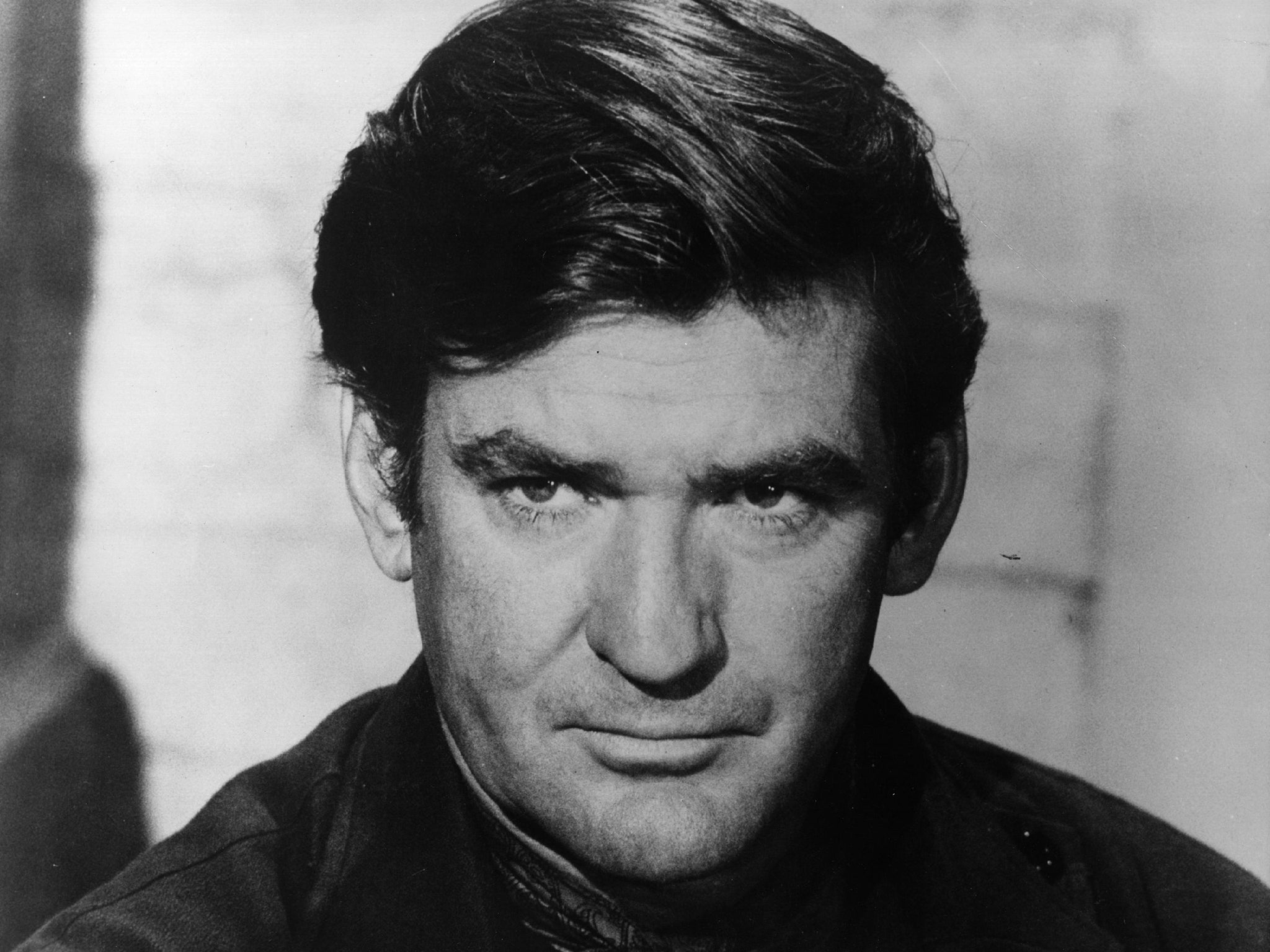Rod Taylor: Actor with suave yet rugged good looks best known for his lead roles in 'The Birds' and 'The Time Machine'

Though he never had the starry cachet of Cary Grant, Rock Hudson or James Garner, the good looks of Rod Taylor, at once suave and rugged, made him an ideal leading man both for romantic comedies and action films.
He made his biggest impact with two starring roles in the early 1960s, in The Time Machine, and The Birds – a film which seems to begin as a romcom before mutating into a terrifying thriller.
He wasn’t Alfred Hitchcock’s first choice to play Mitch Brenner, the lawyer who falls for Tippi Hedren’s socialite in his adaptation of the Daphne du Maurier short story about an avian invasion. The Birds’ scriptwriter Evan Hunter recalled a conversation before the film had been cast. “Well, the girl should be Grace, of course, but she’s in Monaco being a princess, isn’t she?” Hitchcock told him. “And for the man, Cary, of course. But ... there are only two stars in this picture – the birds and me.”
In his Biographical Dictionary of Film, David Thomson described The Birds as “an audacious use of science fiction apocalypse to dramatise emotional insecurity”, and Taylor’s permanent air of being slightly troubled fitted the mood perfectly. But he was taken aback to be offered the role. “I got this call out of the blue from Mr Hitchcock and was totally amazed,” he recalled. “And being a brash young brat, I guess I didn’t show any kind of respect that I was supposed to, and I think he kind of liked it. I said, ‘I hope the birds and things don’t kind of totally outshadow the people.’ Of course, that’s the story – they’re supposed to. But then we really talked about making movies and how I loved it, and we just got on extremely well. I was absolutely flattered and astonished.”
Hitchcock famously, or notoriously, treated Hedren, the model making her acting debut, atrociously during filming. But Taylor helped her through. “Rod was a great pal to me and a real strength,” she said. “We were very, very good friends. He was one of the most fun people I have ever met, thoughtful and classy. There was everything good in that man.”
Taylor had gone to Hollywood in the 1950s; he was born in a Sydney suburb, an only child. His father was a building contractor and commercial artist, while his mother wrote short stories and children’s books. Taylor worked for a while as a commercial artist himself, but changed tack after seeing Laurence Olivier in a touring production with the Old Vic. He worked on stage and on the radio, and in 1954 won an award for his radio work which included a ticket to London via Los Angeles.
He never made it London, and was soon to be seen on American television, in such series as Cheyenne, and he was considered for the lead role in Maverick, which went eventually to James Garner. Then after a series of supporting roles he landed the part of H George Wells, the time traveller who falls in love (with Yvette Mimieux) 800,000 years in the future, when humanity has split into two mutually hostile species, in George Pal’s highly regarded adaptation of HG Wells’ novel The Time Machine. Pal had originally considered casting a middle-aged Brit, such as David Niven or James Mason, but needing someone of a more athletic and idealistic bent gave Taylor his first big role.
In 1960-61 he starred as a foreign correspondent in the drama series Hong Kong, which suffered from going up against Wagon Train in the schedules. He also voiced Pongo, the lead dog, in Disney’s 101 Dalmatians. Then came The Birds in 1963, and the same year he starred with Jane Fonda in the romantic comedy Sunday in New York. There followed a string of not dissimilar roles, including The VIPs (1963) with Richard Burton, Elizabeth Taylor and Maggie Smith; Fate Is the Hunter (1964) with Suzanne Pleshette, who’d played his old flame in The Birds; Young Cassidy (1965) with Julie Christie and Maggie Smith again; The Liquidator (1965) with Jill St John; and The Glass Bottom Boat (1966) with Doris Day.
Tiring of playing the romantic lead, he began to look for grittier roles, beginning with the Western Chuka (1967), which he produced and helped write, and the war film Dark of the Sun (1968, released in Britain as The Mercenaries). The 1970s and ’80s, were largely taken up with TV work, including Bearcats! and The Oregon Trail. From 1988 to 1990, he appeared in the Dallas-inspired Californian wine industry soap Falcon Crest.
He had retired from acting – “Pretending to still be the tough man of action isn’t dignified for me any more,” he said in 1987. “There comes a time when you’re over the hill and there are plenty of great looking younger actors who can take your place” – when Quentin Tarantino tempted him back on to the big screen for a well-regarded cameo as Winston Churchill in Inglourious Basterds (2009).
Taylor, who had a lifelong interest in art, spending much of his spare time painting and making pottery, died of a heart attack at home following dinner with friends. His daughter Felicia Taylor, who he had with his second wife, Mary Hilem, is a former anchor and financial reporter for CNN.
Rodney Sturt Taylor, actor and producer: born Lidcombe, New South Wales 11 January 1930; married 1951 Peggy Williams (divorced 1954), 1963 Mary Hilem (divorced 1969; one daughter), 1980 Carol Kikumura; died Los Angeles 7 January 2015.
Subscribe to Independent Premium to bookmark this article
Want to bookmark your favourite articles and stories to read or reference later? Start your Independent Premium subscription today.

Join our commenting forum
Join thought-provoking conversations, follow other Independent readers and see their replies